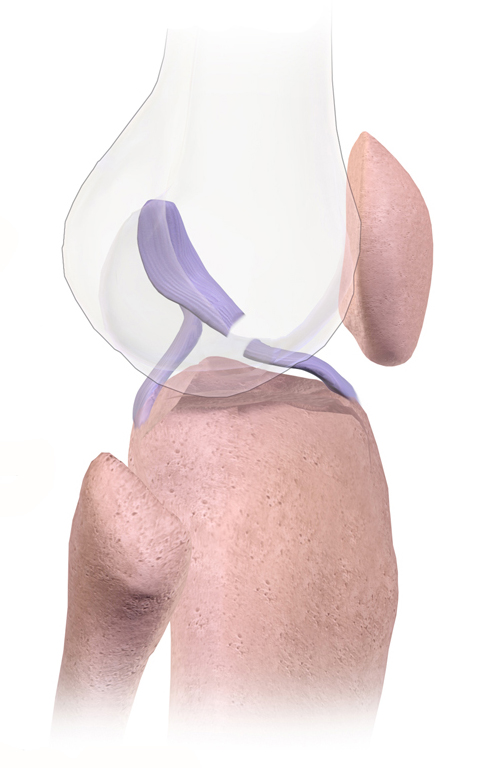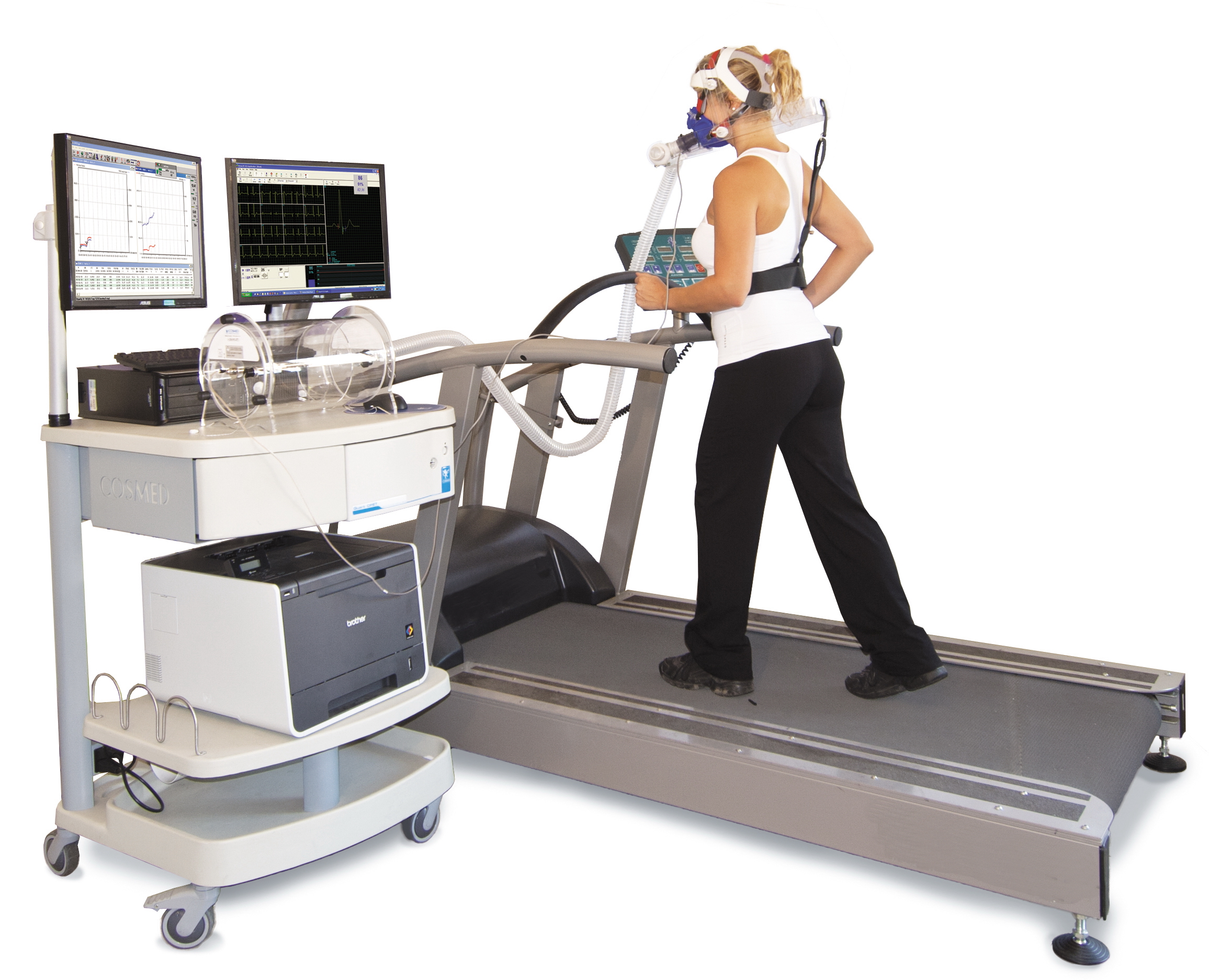|
Conconi Test
The Conconi Test is a sports medicine test intended to measure an individual's maximum anaerobic and aerobic threshold heart rates. The test measures a person's heart rates at different loads (e.g. faster speeds on a treadmill). The points are plotted on a graph with heart rate on one axis and power (or some correlated measurement such as running speed) on the other axis; the graph's deflection point indicates the aerobic threshold. The heart rate increases (approximately) linearly up to the deflection point, where the heart rate reaches AT (also known as LT, lactate threshold, in more modern nomenclature). The test continues for a while, under increasing load, until the subject has gone well past the anaerobic threshold. Accuracy Two studies from the mid 90s showed the Conconi test to be inaccurate and impractical in assessing the anaerobic threshold, while other recent studies are disputing or have disputed this contention, and still others proposed modifications to improve th ... [...More Info...] [...Related Items...] OR: [Wikipedia] [Google] [Baidu] |
Sports Medicine
Sports medicine is a branch of medicine that deals with physical fitness and the treatment and prevention of injuries related to sports and exercise. Although most sports teams have employed team physicians for many years, it is only since the late 20th century that sports medicine emerged as a distinct field of health care. In many countries, now over 50, sports medicine (or sport and exercise medicine) is a recognized medical specialty (with similar training and standards to other medical specialties or sub-specialties). In the majority of countries where sports medicine is recognized and practiced, it is a physician (non-surgical) specialty, but in some (such as the USA), it can equally be a surgical or non-surgical medical specialty, and also a specialty field within primary care. In other contexts, the field of sports medicine encompasses the scope of both medical specialists as well as Allied health professions, allied health practitioners who work in the field of sport, su ... [...More Info...] [...Related Items...] OR: [Wikipedia] [Google] [Baidu] |
Anaerobic Threshold
Lactate inflection point (LIP) is the exercise intensity at which the blood concentration of lactate and/or lactic acid begins to increase rapidly. It is often expressed as 85% of maximum heart rate or 75% of maximum oxygen intake. When exercising at or below the lactate threshold, any lactate produced by the muscles is removed by the body without it building up. The onset of blood lactate accumulation (OBLA) is often confused with the lactate threshold. With an exercise intensity higher than the threshold the lactate production exceeds the rate at which it can be broken down. The blood lactate concentration will show an increase equal to 4.0 mM; it then accumulates in the muscle and then moves to the bloodstream. Regular endurance exercise leads to adaptations in skeletal muscle which raises the threshold at which lactate levels will rise. This is mediated via activation of the protein receptor PGC-1α, which alters the isoenzyme composition of the lactate dehydrogenase ( ... [...More Info...] [...Related Items...] OR: [Wikipedia] [Google] [Baidu] |
Heart Rate
Heart rate is the frequency of the cardiac cycle, heartbeat measured by the number of contractions of the heart per minute (''beats per minute'', or bpm). The heart rate varies according to the body's Human body, physical needs, including the need to absorb oxygen and excrete carbon dioxide. It is also modulated by numerous factors, including (but not limited to) genetics, physical fitness, Psychological stress, stress or psychological status, diet, drugs, hormonal status, environment, and disease/illness, as well as the interaction between these factors. It is usually equal or close to the pulse rate measured at any peripheral point. The American Heart Association states the normal resting adult human heart rate is 60–100 bpm. An ultra-trained athlete would have a resting heart rate of 37–38 bpm. ''Tachycardia'' is a high heart rate, defined as above 100 bpm at rest. ''Bradycardia'' is a low heart rate, defined as below 60 bpm at rest. When a human sleeps, a heartbeat with ra ... [...More Info...] [...Related Items...] OR: [Wikipedia] [Google] [Baidu] |
Aerobic Threshold
Lactate inflection point (LIP) is the exercise intensity at which the blood concentration of lactate and/or lactic acid begins to increase rapidly. It is often expressed as 85% of maximum heart rate or 75% of maximum oxygen intake. When exercising at or below the lactate threshold, any lactate produced by the muscles is removed by the body without it building up. The onset of blood lactate accumulation (OBLA) is often confused with the lactate threshold. With an exercise intensity higher than the threshold the lactate production exceeds the rate at which it can be broken down. The blood lactate concentration will show an increase equal to 4.0 mM; it then accumulates in the muscle and then moves to the bloodstream. Regular endurance exercise leads to adaptations in skeletal muscle which raises the threshold at which lactate levels will rise. This is mediated via activation of the protein receptor PGC-1α, which alters the isoenzyme composition of the lactate dehydrogenase (L ... [...More Info...] [...Related Items...] OR: [Wikipedia] [Google] [Baidu] |
Anaerobic Exercise
Anaerobic exercise is a type of exercise that breaks down glucose in the body without using oxygen; ''anaerobic'' means "without oxygen". This type of exercise leads to a buildup of lactic acid. In practical terms, this means that anaerobic exercise is more intense, but shorter in duration than aerobic exercise. The biochemistry of anaerobic exercise involves a process called glycolysis, in which glucose is converted to adenosine triphosphate (ATP), the primary source of energy for cellular reactions. Anaerobic exercise may be used to help build endurance, muscle strength, and power. Metabolism Anaerobic metabolism is a natural part of metabolic energy expenditure. Fast twitch muscles (as compared to slow twitch muscles) operate using anaerobic metabolic systems, such that any use of fast twitch muscle fibers leads to increased anaerobic energy expenditure. Intense exercise lasting upwards of four minutes (e.g. a mile race) may still have considerable anaerobic energy e ... [...More Info...] [...Related Items...] OR: [Wikipedia] [Google] [Baidu] |
Cardiac Stress Test
A cardiac stress test is a cardiological examination that evaluates the cardiovascular system's response to external stress within a controlled clinical setting. This stress response can be induced through physical exercise (usually a treadmill) or intravenous pharmacological stimulation of heart rate. As the heart works progressively harder (stressed) it is monitored using an electrocardiogram (ECG) monitor. This measures the heart's electrical rhythms and broader electrophysiology. Pulse rate, blood pressure and symptoms such as chest discomfort or fatigue are simultaneously monitored by attending clinical staff. Clinical staff will question the patient throughout the procedure asking questions that relate to pain and perceived discomfort. Abnormalities in blood pressure, heart rate, ECG or worsening physical symptoms could be indicative of coronary artery disease. Stress testing does not accurately diagnose all cases of coronary artery disease, and can often indicate that it e ... [...More Info...] [...Related Items...] OR: [Wikipedia] [Google] [Baidu] |



